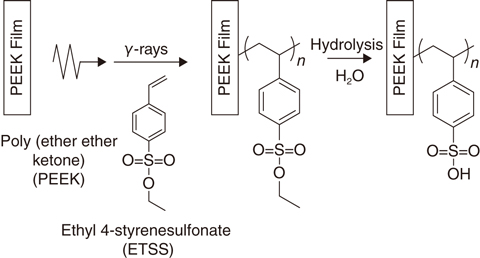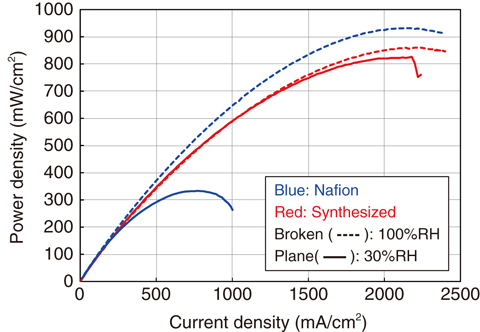
Fig.5-38 Synthetic scheme of an aromatic hydrocarbon-type PEM

Fig.5-39 Comparison of fuel cell tests at 80 °C under different relative humidity conditions
Polymer-electrolyte-membrane (PEM) fuel cells have received attention as energy sources for next-generation applications such as fuel-cell vehicles and stationary-cogeneration systems. PEMs, which are used as the separator between the cathode and the anode, are key components because their ionic resistance directly determines the power-generation efficiency. PEMs that afford high power density are desirable for the extraction of large amounts of electric power per unit area. Thus far, sulfonated perfluoropolymers such as Nafion have been predominantly used as PEMs. However, these materials cause several critical problems, including high fuel crossover and power-density decreases under low relative humidity (RH) at 80 °C.
To solve these issues, graft-type PEMs based on poly (ether ether ketone) (PEEK) with high gas-barrier properties (PEEK-PEM) were prepared by radiation-induced graft polymerization. Ethyl 4-styrenesulfonate (ETSS) was selected as a grafting monomer to prevent damage to the PEEK substrate during the sulfonation process. After graft polymerization, the sulfonate of the ETSS-grafted PEEK films could be converted to the sulfonic-acid group by hydrolysis (Fig.5-38). Radiation-induced graft polymerization of the ETSS monomer was attempted under numerous reaction conditions since there have been few reports of grafting based on PEEK film. Consequently, we found that the graft reaction of ETSS with PEEK films irradiated with γ-rays occurred efficiently in ETSS/dioxane mixtures, enabling a PEEK-PEM with high ion conductivity to be obtained.
Fuel-cell tests of the membrane-electrode assemblies (MEAs) fabricated with PEEK-PEM and Nafion were performed under 100%RH and 30%RH at 80 °C, respectively; the current-density (I-W) polarization curves of the fuel cells are plotted in Fig.5-39. Nafion-based MEA under the low-humidity condition (30%RH) showed a maximum power density (E max) of 333 mW/cm2, which was 1/3 times lower than that of Nafion-based MEA under 100%RH at 80 °C. In contrast, PEEK-PEM-based MEA under 30%RH at 80 °C maintained an E max level of 96% of that at 100%RH, where it exhibited the world’s highest power density of 826 mW/cm2.
Practical application of the developed PEEK-PEM is expected. PEEK-PEM fuel cells would be useful as energy sources for fuel-cell vehicles.